[ad_1]
You can’t outrun a bad diet. The phrase is a bit cliché for a reason—it’s the truth. When shedding pounds is the goal, what you eat can be more impactful than your workout. While dropping pounds comes down to consuming fewer calories than you burn, if you want to make it easier on yourself, there are some foods to avoid for weight loss.
“There aren’t exercises you do to target body fat—nutrition and what you’re putting into your body plays a huge role,” says Jenna Stangland, R.D.N., sports dietician for the Minnesota Wild and performance engineer with Momentous.
That doesn’t mean you must steer clear of certain foods entirely, even your favorite fast food or go-to snack.
“We know that restriction backfires on most people,” says Jen Bruning, a registered dietician nutritionist and media spokesperson for the Academy of Nutrition and Dietetics. But you need to limit some of your favorite treat foods, educate yourself on foods to avoid for weight loss, and look for better options if you want the best chances of success.
When looking for weight loss-friendly foods, the key is to choose foods that are good for you that’ll keep you feeling full and satisfied and support your training and daily activity. That means plenty of fiber, protein, and bulky foods that take up space in your stomach.
When determining what not to eat to lose weight, avoid foods that lack fiber, are calorie dense without providing many nutrients, and are poorly balanced in terms of protein, carbs, and fat content. Here are the top foods to avoid to lose weight.
15 Foods to Avoid for Weight Loss
Andrew Hetherington/Getty Images
1. Refined Baked Goods
Donuts, cake, cookies, and muffins—damn if they aren’t delicious, but boy are they sugar bombs with little else to offer. Sugary, fatty treats can lead to weight gain and make weight loss more tricky since they’re not filling or nutritious. While keeping some of these foods in your diet is fine (nobody wants to be the guy who turns down birthday cake at his kid’s party), moderation is key.
One measly donut will cost you 200 to 500 calories and packs a ton of sugar without filling fiber. Wonder how your favorite packaged cookie stacks up? Three Chips Ahoy! Chocolate chip cookies yield 160 calories and 8 grams of fat without providing any nutrients to fuel recovery or provide lasting energy.
But let’s be honest: Do you ever stop after three? Whether you’re hitting up the local bakery or Little Debbie, eating too many baked goods can lead to overconsuming calories and snowball to rapid weight gain and poor digestive function. Baked goods, whether homemade or store-bought, are typically foods to avoid to lose weight.
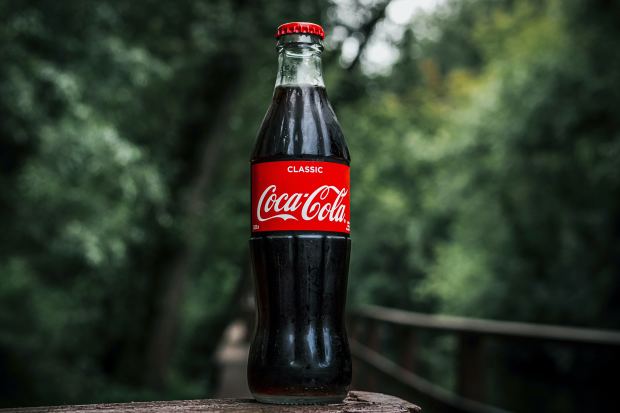
Unsplash
2. Soda
Empty calories in the form of refined sugar but no solid volume or fiber—double whammy. Go for sparkling water or iced tea instead, says Bruning. She recommends stirring in a flavored swizzle stick for extra sweetness to help better satisfy a soda craving; it’ll still clock in at way fewer calories from sugar than the alternative, which has 170 calories and almost 50 grams of sugar per can.
If you really can’t break your soda habit, try using diet alternatives. Diet soda can replace hundreds of calorie-filled sodas without impacting your overall calorie balance. Research shows people who replace regular soda with calorie-free alternatives consume fewer calories overall and lose more weight in the long run.
Just note aspartame, an artificial sweetener often used in diet soda, has been a buzzing topic lately as the WHO reported it’s a possible carcinogenic (meaning it may cause cancer), even though the FDA disagrees.
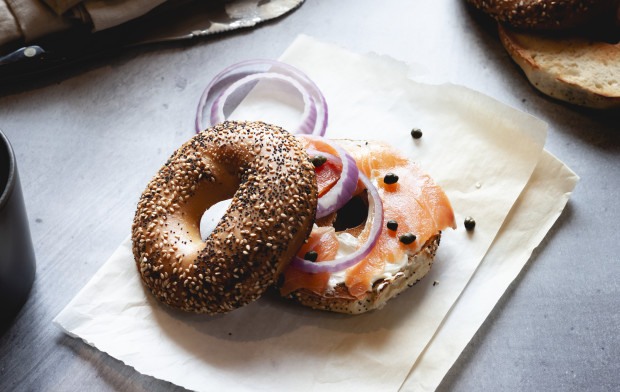
Lucian Smoot/Getty Images
3. Bagels
Passing on an everything bagel with scallion cream cheese is no small feat for mortal man. Bagels are sinfully delicious; but definitely more sinful. They come in around 350 calories and have about 70 grams of carbohydrates—before any spread. If you smear sparingly—a pat of butter or a smear of cream cheese-you’ll add approximately 40 and 35 calories, respectively.
As a calorie-dense food that doesn’t have much in the way of fiber, bagels are not likely to keep you feeling full or satisfied for long. If you must have your bagel fix, try looking for smaller whole-grain options and filling the middle with lean protein and high-volume veggies. Even better, make an omelette for breakfast instead. We’ve debunked whether eggs are good for you. They provide a nice amount of protein with minimal calories.
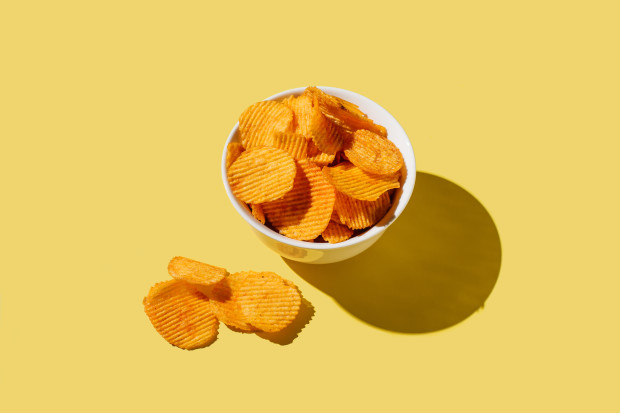
Tanja Ivanova/Getty Images
4. Potato Chips
Some foods to avoid to lose weight are surprising. Chips are not. The worst variety is, of course, the most common: white potatoes fried in vegetable oil. They’re not only calorie dense and devoid of nutrients, but they’re also incredibly difficult to stop eating, which is by design. Food producers know how to concoct the perfect food storm that keeps you reaching in that bag long after you know you should stop. Avoiding these highly palatable foods is best when trying to lose weight, especially if you have trouble limiting yourself to a small portion.
Instead, look for sweet potato chips (to get some more vitamins) that are baked rather than fried. Brands like Bare and Terra have good options with very few ingredients. Bruning’s pick: legume-based snacks, like pea or chickpea crisps, to satisfy your crunchy craving and pack in extra fiber.
Or, choose another crunchy, salty snack that’s been shown to keep you satisfied longer while still addressing that must-munch craving: popcorn. It’s packed with fiber and air, making it much more filling and easier on the waistline.
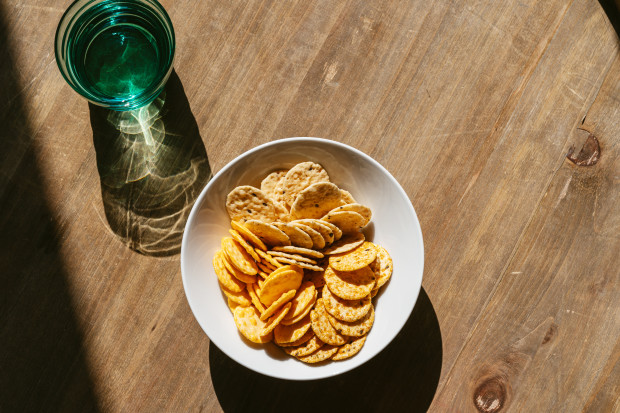
istetiana/Getty Images
5. Crackers
Crackers are a highly addictive and easy-to-overeat salty snack often packed with sugar as preservative and potentially unhealthy oil. Crackers are highly palatable, like potato chips and other highly refined processed foods, and don’t keep you feeling full.
Crackers made with whole grains, nuts, and seeds usually sidestep the added sugar (and have more protein to boot). For a protein boost, try topping them with lean deli meat, tuna, chicken, or light cheese.
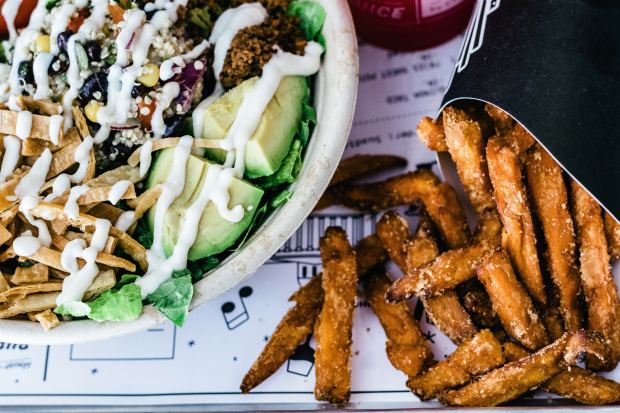
Suad Kamardeen/Unsplash
6. Bottled Salad Dressing
Typical packaged salad dressings pack a ton of fat, sugar, and sodium (as much as 200 to 300 mg per serving). And keep in mind that the typical serving is only a couple of tablespoons; if you’re eating a big salad, you could easily douse on way more than that. For instance, each two tablespoon serving of Ranch dressing will set you back around 130 calories—and all from food that won’t fill you up or provide any real nutrient benefits.
Use a little oil and vinegar instead, or supplement just a little of your favorite bottled dressing with lemon juice or balsamic vinegar for extra flavor.
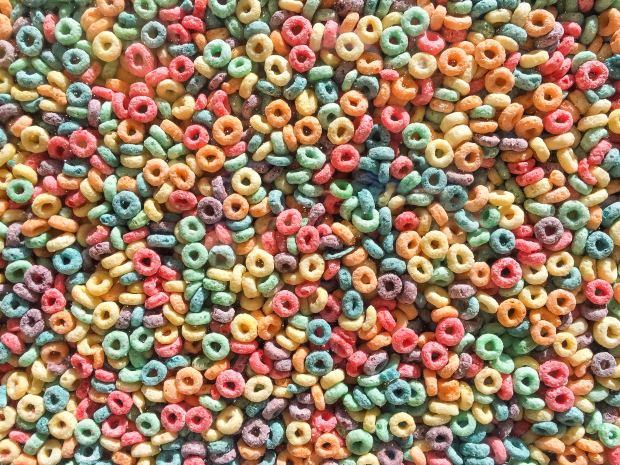
Etienne Girardet/Unsplash
7. Sugary Breakfast Cereal
You know rainbow-colored cereal studded with marshmallows falls into the bucket of what not to eat to lose weight. But here’s what people don’t know: Most breakfast cereals are sugar laden without fiber, protein, or naturally occurring nutrients. This leaves you with a breakfast that won’t keep you full or energized, and you’ll likely be reaching for something more in short order.
Opt for oatmeal instead, and be sure to go for rolled or steel-cut oats, not the prepackaged instant packets—which have less fiber and more sugar. Create an even more weight loss-friendly meal by adding egg whites and shredded carrots or zucchini while cooking, topping with berries, and a sprinkling of nuts. Alternatively, top your oats with high-protein milk, Greek yogurt, or mix in some protein powder.
Here’s everything you need to know about oatmeal.
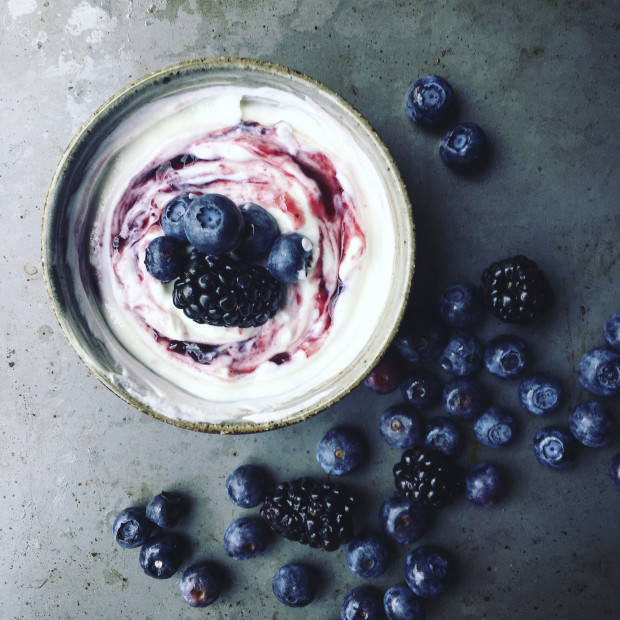
Cavan Images/Getty Images
8. Flavored Yogurt
This seemingly healthy snack often delivers a serious hit of sugar, sometimes making it no better for you than a handful of M&M’s. “Flavored yogurts, even the innocuous vanilla variety, can pack nearly 30 grams of sugar per 6 oz. serving. Avoid the flavored varieties and stick with plain Greek yogurt,” says Tanya Zuckerbrot, MS, RD, Registered Dietitian and founder of F-Factor Nutrition, a private nutrition counseling practice in Manhattan.
While sugar on its own won’t stop you from losing weight, it’s incredibly easy to overconsume calories when a large amount of them come from sugar, which is not filling or nutritious. Sugar can provide energy, but only if it’s released slowly, such as the kind found in fruit accompanied by filling fiber.
Mix in your own berries or a small spoonful of honey to add flavor to plain varieties and boost the protein content by choosing Greek yogurt or skyr.
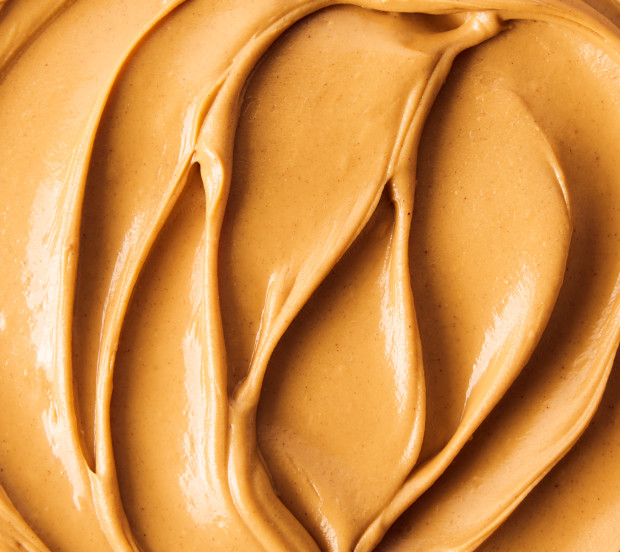
Jessica Dean/Getty Image
9. Sugary Nut Butter
Certain kinds of nut butter pack tons of sugar and sometimes even high-fructose corn syrup—which, along with the natural fats, make them foods to avoid to lose weight due to their high calorie count. Make sure to read the label and look for varieties with just nuts (and maybe a bit of salt).
Although nuts, in general, are a healthy snack, they’re still calorie dense, and it’s vital to manage portion size if you’re looking to lose weight. “Nuts, nut butters, and avocados are all great stuff, but since these healthy foods are high in fat, the calories add up fast. Remember, 1 gram of fat is 9 calories compared to 1g of protein or carbohydrate (both 4 calories). Many people I counsel in my office are eating these quality foods, but their portions are too large,” says Angela Lemond, RDN, CSP, LD, and spokesperson for the Academy of Nutrition and Dietetics.
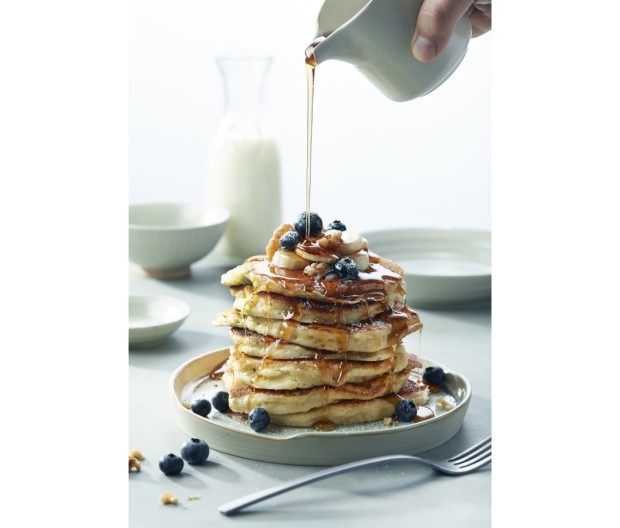
Cavan Images/Getty Images
10. Pancake Syrup
You should absolutely treat yourself to an indulgent brunch or dinner from time to time. However, treating yourself too often tips the scale in the wrong direction. “Looking to add a touch of sweetness to your meal? Don’t reach for pancake syrup, which is simply nutrient-devoid high-fructose corn syrup mixed with preservatives and artificial colors and flavors. This highly refined sweetener may lead you to further crave sweets and sugary foods. Plus, it offers none of the micronutrients, antioxidants, or phytochemicals that less refined sweeteners offer, like real maple syrup or honey,” says Zuckerbrot.
Instead of topping your pancakes with sugary toppings, add balance by dolloping on some Greek yogurt, fresh fruit, and nuts for added fiber, nutrients, and protein. For an even better breakfast, ensure your pancakes or waffles are made with high-fiber flour such as whole oat or whole wheat.
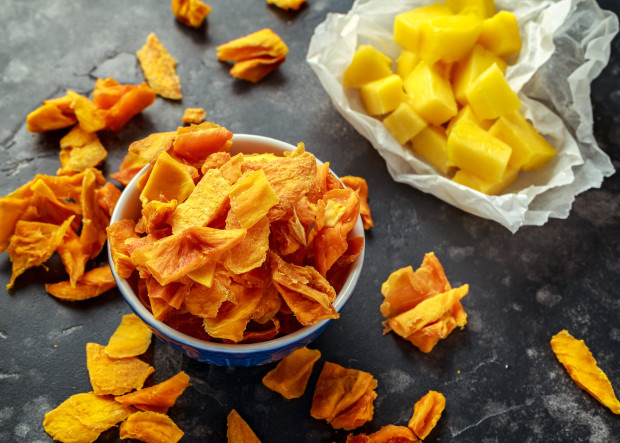
DronG/Getty Images
11. Dried Fruit
Dried fruit is on par with candy in terms of sugar content and lacks the volume and filling properties of water-filled fresh fruit. Hence, it’s much easier to go overboard with dried varieties than fresh ones, thanks to the physical size of the food.
Picture one raisin versus one grape, and you’ll get the gist of it. “Taking the water out of fruit leaves you with sugar and calories. Dried fruit is calorically dense due to natural and sometimes added sugar,” says Zuckerbrot. For context, 100 grams of raisins contain about 300 calories, while the same of grapes only have 80 calories.
Instead, choose whole fruit, which has volume, fiber, and the power to keep you feeling full, which may result in consuming fewer calories naturally. Consuming fewer calories than you burn will lead to weight loss, and research shows eating whole fruits is one of the best ways to achieve this.
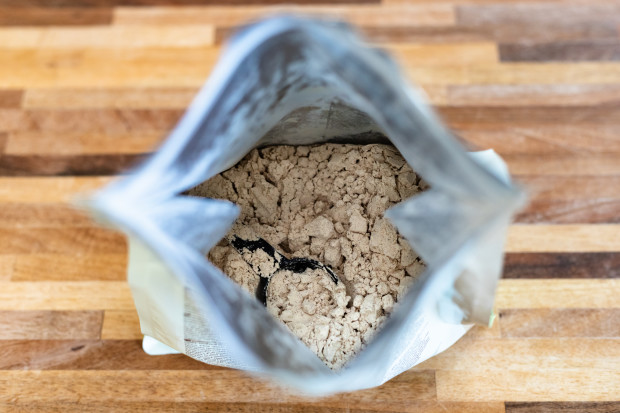
Photographer, Basak Gurbuz Derman/Getty Images
12. Protein Powder
Of course, you don’t need to avoid the best whey protein powders (read: clean, third-party tested) entirely but consider how much you rely on them to meet your protein goals. A diet high in protein—about 0.7 to 1g per pound of body weight—is ideal for supporting weight loss while preserving your hard-earned muscle mass, but protein is also the most satiating and filling type of food…when consumed in whole form.
Relying on fast-digesting whey or other protein powders to get your protein intake won’t give you the benefits of keeping you full and satisfied with your meals, leading to hunger and a higher likelihood of reaching for more food that can take you over your calorie limits. We like to use protein powder and make the best protein shakes to supplement nutrition post-workout.
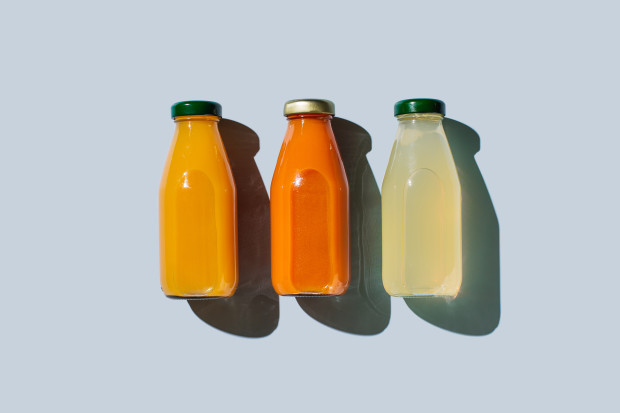
Tanja Ivanova/Getty Images
13. Fruit Juice
The problem with most juices is they’re loaded with sugar and calories without any filling fiber, so they aren’t particularly nutritious. Drinking your calories is not a wise choice when trying to lose weight since beverages don’t keep you as full as solid foods will.
Research published in the Journal of the Academy of Nutrition and Dietetics found those who eat whole fruit are less likely to have obesity and metabolic syndrome. In contrast, those who drank fruit juice did not gain the same benefits. Your best bet: Stick to water and eat your fruit in its whole form instead for the fiber and volume benefits they provide.
Unsweetened cherry or grape juice can help you recover after a strenuous workout by keeping your blood flowing properly, boosting your cardiovascular health, and filling your body with antioxidants. However, remember it won’t fill you up, so it’s best used sparingly.
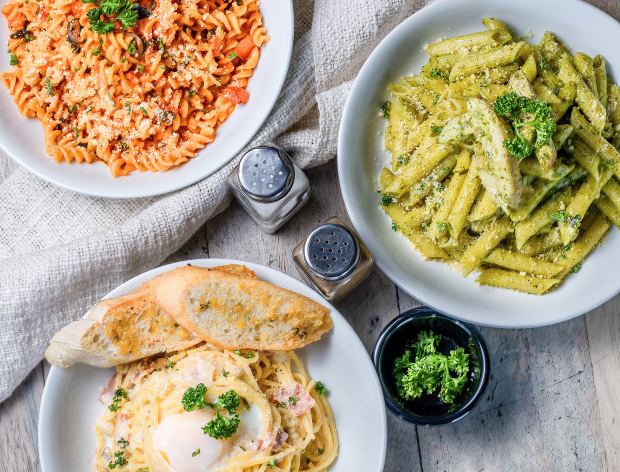
Nerfee Mirandilla/Unsplash
14. Refined Flour Pasta
Twirling your spaghetti to perfection may exhaust your hands, but it won’t even come close to negating the empty calories it contains. Research published in Advances in Nutrition shows that choosing whole-grain pasta varieties over refined types leads to reduced appetite and can lead to weight loss over time.
Regular or refined pasta loses its fiber during processing, so any nutrients the wheat may have contained initially get scrapped. Furthermore, refined grains pass through your body quickly and leave you feeling hungry shortly after you finish eating.
If you’ve gotta have your pasta, go for whole-grain varieties, which digest more slowly and make you feel fuller for longer. An even better alternative: Spiralize some zucchini, squash, or carrot to replace or add to your grain-based pasta, or try or plant-based pasta alternatives. Bean-based ones, for example, are loaded with protein and fiber for a filling, nutrient-packed meal.
Moreover, if you usually make pasta because you want dinner in a flash, try these easy, healthy dinner ideas that are all made in an Instant Pot.
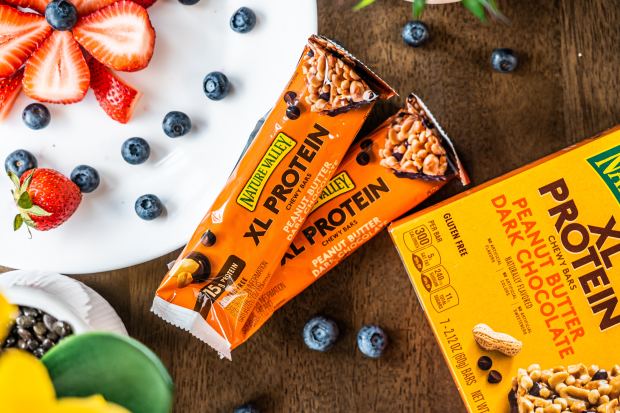
Hybrid Storytellers/Unsplash
15. Energy Bars
Most energy, protein, and granola bars are just candy bars by a different name. Many are loaded with sugar, and a surprising number contain more than 200 or 300 calories. They also don’t quite satisfy hunger like a lean chicken dish or a hearty salad would for the same amount of calories. Energy bars often lack fiber, especially when compared to sugar content, and don’t have a high water content, leaving them lower in volume and more calorie-dense.
One study published in the Journal of Functional Foods showed that eating a protein bar daily can lead to overconsuming calories, resulting in weight gain. Participants gained 3 percent body fat in only a week of daily protein bar consumption.
If you want to grab the healthiest protein bars on the go, look for higher fiber and protein content, 200 or fewer calories, and less than 10 grams of sugar (less than five when possible!).
[ad_2]
Source link

